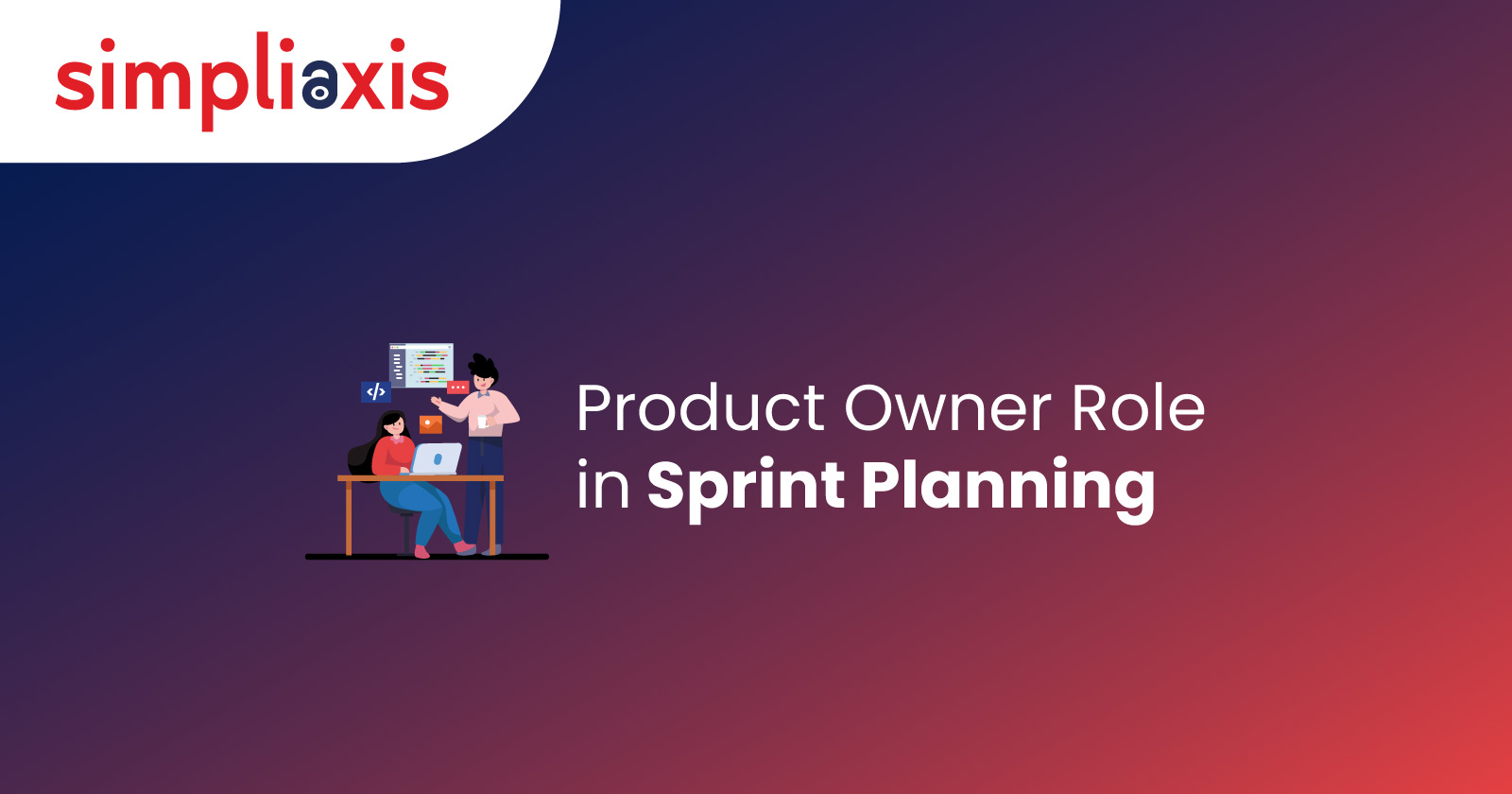Sprint Planning is a very important event in a Scrum project and it plays a significant role in ensuring the success of the delivery of ready Product Increments through iterations. Sprint Planning is the Scrum Event, where planning is done about what the team will achieve in the next Sprint and the team makes a commitment toward it. The Sprint Planning meeting creates the Sprint and establishes what can be done. The Product Owner, Scrum Master, and the whole Scrum Team attend this Sprint Planning meeting. The Product Owner plays a crucial role in the meeting. Even before the meeting, the Product Owner is closely involved in setting up the agenda of the meeting because he or she is chiefly responsible for initiating and creating the Sprint. The result of the Sprint cycle majorly depends on the Product Owner.
The Product Owner has a very broad role in taking the product from vision to implementation and Sprint Planning is a critical part of that. Moreover, since the Product Backlog should be refined regularly so the Product Owner has to propose the future Sprint Backlog. The other members of the Agile team may also be invited to the Sprint Planning meeting and their help sought to refine the backlog and make sure that the User Stories are available to develop during the Sprint Planning meeting. But a major issue in Scrum is that the Product Owner's role depends on how it is going to be implemented in a project. No fixed standard role can be assigned to the Product Owner for every project. The main reason for this is that the market conditions keep changing and the products and requirements also keep changing accordingly. Besides, Stakeholders can change their thoughts at any time based on the demands of the end-user. But, some roles and responsibilities of the Product Owner are and will remain common to all projects regardless of how Scrum is implemented in a particular project. This is particularly true as far as Sprint Planning is concerned. So, let us focus on the Product Owner's role in Sprint Planning.
Role & Responsibilities of a Product Owner
Sprint planning initiates the Sprint when it sets down the work to be done. The whole Scrum Team collaborates to create the plan, but the Product Owner plays a pivotal role. In the Sprint Planning event, the Product Owner has to come prepared with the lessons learned from previous Sprint Reviews, feedback from the Stakeholders, and a vision for the product.
- But even before the Sprint Planning meeting takes place, the Product Owner has to create a Product Backlog based on the Stakeholders' vision. The product owner has to clearly understand the expectations of all the stakeholders so that such user stories that have high business value and constantly maintain the worth of the project may be created and defined.
- The product owner communicates about the product backlog with all those to attend the Sprint Planning meeting and ensures they are well-prepared to discuss the most important items in the product backlog and the way to map the product goal.
- Traditionally, the Product Owner decides which User Stories to select from the Product Backlog during the Sprint Planning meeting. So, the Product Owner has the authority to make a unanimous decision on what should be in the Sprint Backlog. However, things have changed recently. Now, the product owner invites the other team members to participate in the discussion when deciding on the Sprint Backlog.
- The Product Owner then proceeds to inform the team how the present Sprint would add value to the product and increase its utility. The product owner shares the Sprint Goal with the team and which of the backlog items would contribute to that goal. A Sprint Goal is nothing but a concise (usually one to two sentences) description of what the team would accomplish during the Sprint. The Product Owner collaborates with the team to write the Sprint Goal and defines it on the basis of the value being sought.
- During the Sprint Planning meeting, the Product Owner describes the features that are most important to the team. Then, the team asks questions, and the Product Owner answers so that the high-level User Story of the Product Backlog can be translated into more detailed tasks of the Sprint Backlog.
- The Product Owner, in discussion with the Developers, chooses the items from the Product Backlog that will be included in the current Sprint. The Product Owner explains the meaning of each item so that the team is clear about what the Product Owner actually wants and builds accordingly.
- The Product Owner exercises influence on the Sprint Planning by reordering the Product Backlog items to lead the team to select those items that can provide the desired business results.
- Another important task that a Product Owner must do is to make sure that the Product Backlog is readily available to every team member, particularly if the teams are distributed.
- The Product Owner participates in the Sprint Planning meetings like any other member and gets involved in the discussions centering around the Sprint Goal and Backlog and plans about how work will be carried out. However, he or she does not have a say in how much work will be taken up or can be done in the upcoming Sprint. It is up to the team to decide how much work they can do in the next Sprint.
So, the Product Owner provides the business context of the Sprint being planned but makes no decisions about Sprint's plan. It is pertinent to clarify here that the Product Owners do not have any specific authority. However, their decisions regarding the Product Backlog must be given due credence. Eventually, the Product Owner must allow the team to make its own decisions regarding how many items are planned. This keeps the team motivated and makes them accountable for completing the work being planned in the Sprint. This also increases their commitment to work. In essence, while the Scrum Master facilitates the Sprint Planning meeting, the Product Owner leads the meeting.
Conclusion:
In conclusion, the Product Owner's role in Sprint Planning is indispensable, serving as a catalyst for aligning team efforts with stakeholder expectations and project goals. While the specifics of the role may vary, the Product Owner's responsibility to curate a meaningful Product Backlog and foster collaboration during Sprint Planning remains constant. Ultimately, by providing essential business context and guiding the team towards valuable outcomes, the Product Owner empowers the Scrum team to deliver successful Sprint results, driving the project toward its objectives Discover your potential as a Certified Scrum Master (CSM)® course with SimpliAxis. Gain expertise in guiding Agile teams towards success and become an indispensable leader in today's dynamic market. Don't miss the chance to elevate your skills and career!
















